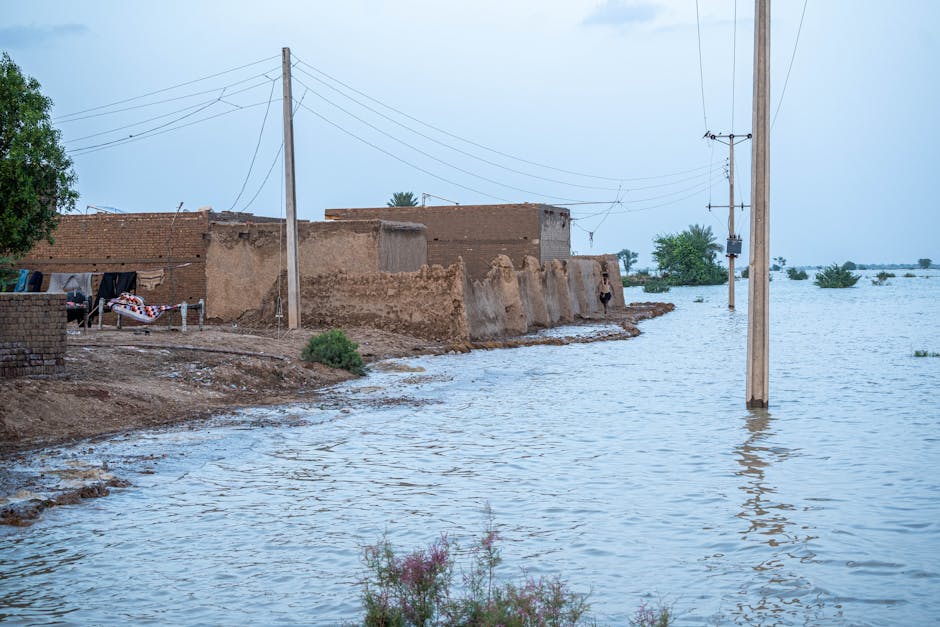The Impact of Location on Insurance Premiums
Insurance is a crucial aspect of modern life, providing protection and peace of mind in the face of unforeseen events. From health insurance to car insurance, the cost of premiums can vary significantly depending on a multitude of factors. One such key determinant is the insured individuals location. The impact of location on insurance premiums is a complex and often overlooked aspect of the insurance industry that can have a substantial effect on the cost of coverage. In this article, we will delve into the various ways in which location influences insurance premiums, exploring its implications and relevance in today’s insurance landscape.
The Relationship Between Location and Insurance Premiums

Location plays a significant role in determining insurance premiums across a range of policies. Insurance companies analyze various factors related to a particular location to assess the risk associated with insuring an individual or property in that area. These factors can include crime rates, weather patterns, natural disaster risk, population density, and the overall cost of living. By understanding how these elements impact the likelihood of filing a claim, insurance companies can adjust their premiums to reflect the level of risk present in a specific location.
For example, urban areas with higher crime rates may see increased premiums for auto insurance due to the higher likelihood of theft or vandalism. Similarly, regions prone to natural disasters such as hurricanes or earthquakes may experience higher premiums for homeowners’ insurance to account for the increased risk of property damage. By tailoring premiums to reflect the unique risk profile of each location, insurance companies can ensure that their pricing accurately reflects the potential costs associated with providing coverage in that area.
Factors Influencing Insurance Premiums by Location

When it comes to determining insurance premiums based on location, there are several key factors that insurance companies consider:
Crime Rates
Crime rates have a direct impact on insurance premiums, particularly for auto and homeowners’ insurance. Areas with high crime rates are more likely to experience theft, vandalism, or property damage, leading to an increased risk for insurers. As a result, individuals living in neighborhoods with elevated crime rates may face higher insurance premiums to offset the potential costs associated with these risks.
Insurance companies utilize crime data and statistics to assess the level of risk in a particular area and adjust their premiums accordingly. By factoring in crime rates, insurers can ensure that their pricing accurately reflects the likelihood of filing a claim due to criminal activities.
Natural Disaster Risk
Regions prone to natural disasters such as hurricanes, earthquakes, floods, or wildfires are considered high-risk areas by insurance companies. The potential for significant property damage or loss in the event of a natural disaster necessitates higher insurance premiums to cover the associated risks. Homeowners in these areas may face increased premiums to ensure their coverage adequately protects them in the event of a disaster.
Insurance companies assess the historical data related to natural disasters in a specific location to determine the level of risk and adjust premiums accordingly. By accounting for the potential impact of natural disasters, insurers can offer appropriate coverage that reflects the unique challenges faced by policyholders in high-risk areas.
Population Density
Population density can also influence insurance premiums, particularly for auto insurance. Areas with high population density are more likely to experience traffic congestion, accidents, and vehicle theft, increasing the risk for insurers. As a result, individuals living in densely populated areas may see higher premiums for auto insurance to cover the elevated likelihood of filing a claim.
Insurance companies consider population density when calculating premiums to account for the increased risk of accidents and property damage in crowded urban areas. By adjusting premiums based on population density, insurers can ensure that their pricing reflects the unique challenges associated with insuring individuals in densely populated regions.
The Role of Zip Codes in Determining Insurance Premiums

Zip codes play a crucial role in determining insurance premiums, as they provide insurers with valuable information about the location of the insured property or individual. Insurance companies utilize zip codes to assess various risk factors associated with a particular area, allowing them to tailor premiums to reflect the level of risk present in that location.
For example, zip codes can provide insights into crime rates, weather patterns, natural disaster risk, and population density, all of which influence the cost of insurance coverage. By analyzing data at the zip code level, insurers can more accurately assess the risks associated with insuring a specific location and adjust premiums accordingly.
Insurance companies may use zip codes to assign a risk score to a particular area, which can impact the cost of insurance coverage for individuals living in that location. By factoring in zip codes when calculating premiums, insurers can ensure that their pricing accurately reflects the unique risk profile of each area and offers appropriate coverage to policyholders.
State Regulations and Insurance Premium Variability

State regulations can also impact the variability of insurance premiums across different locations. Each state has its own set of insurance regulations and requirements that can influence the cost of coverage for policyholders. From minimum coverage limits to legal frameworks governing insurance practices, state regulations play a significant role in shaping the insurance landscape.
For example, states with higher minimum coverage requirements for auto insurance may see increased premiums compared to states with lower requirements. Similarly, states with stringent regulations on insurance practices may experience higher insurance costs due to compliance costs incurred by insurers. By understanding the regulatory environment in each state, insurance companies can adjust their pricing to comply with state laws and provide coverage that meets the required standards.
State regulations can introduce variability in insurance premiums across different locations, making it essential for insurers to adapt their pricing strategies to comply with state laws and regulations. By navigating the regulatory landscape effectively, insurance companies can ensure that their premiums align with legal requirements and offer comprehensive coverage to policyholders.
Expert Opinions
Experts in the insurance industry emphasize the importance of considering location when determining insurance premiums. According to insurance professionals, location-based factors such as crime rates, natural disaster risk, and population density can significantly impact the cost of coverage for policyholders.
David, an experienced insurance agent, explains, “Location plays a crucial role in assessing risk and determining insurance premiums. Insurers analyze various factors related to a particular area to ensure that their pricing reflects the unique challenges faced by policyholders in that location. By considering location-based variables, insurers can offer comprehensive coverage that meets the needs of individuals living in different areas.”
Experts advise consumers to be aware of how location influences insurance premiums and to consider the specific risk factors associated with their area when purchasing insurance coverage. By understanding the impact of location on insurance premiums, policyholders can make informed decisions about their coverage and ensure they are adequately protected in the event of an unforeseen event.
Conclusion
To wrap things up, the impact of location on insurance premiums is a critical consideration in the insurance industry. Location-based factors such as crime rates, natural disaster risk, population density, and state regulations can significantly influence the cost of insurance coverage for individuals and properties. By analyzing these factors and adjusting premiums accordingly, insurance companies can ensure that their pricing accurately reflects the level of risk present in a particular area.
As consumers, it is essential to understand how location influences insurance premiums and to consider these factors when purchasing coverage. By being aware of the impact of location on insurance premiums, policyholders can make informed decisions about their insurance needs and ensure they have the appropriate coverage to protect themselves against unforeseen events.
Ultimately, location is a key determinant of insurance premiums that shapes the cost of coverage for individuals and properties across various policies. By recognizing the significance of location in insurance pricing, both insurers and policyholders can navigate the insurance landscape effectively and secure the protection they need.




